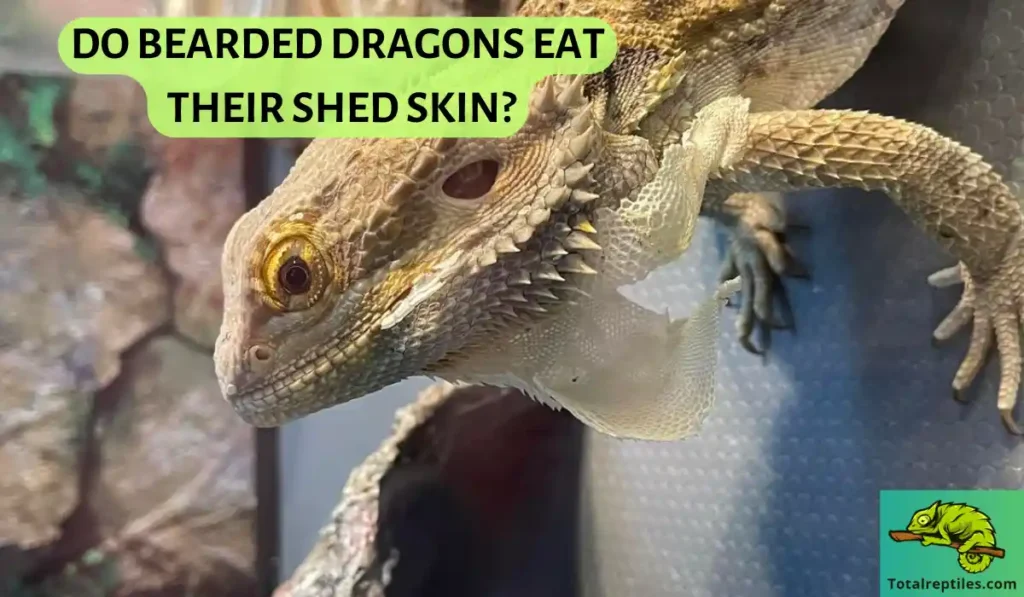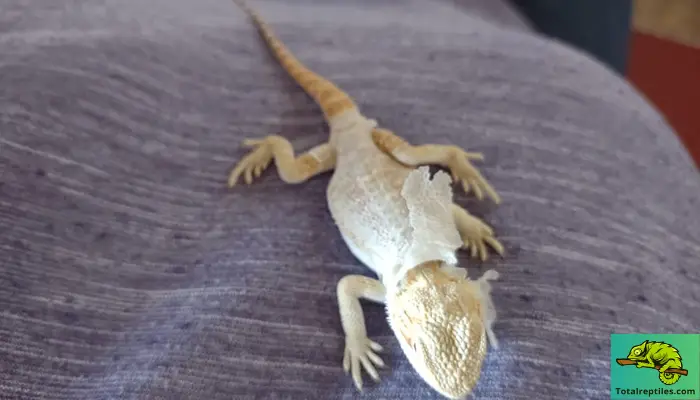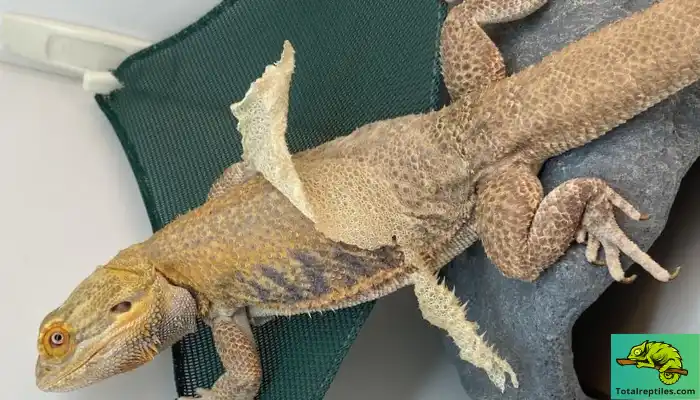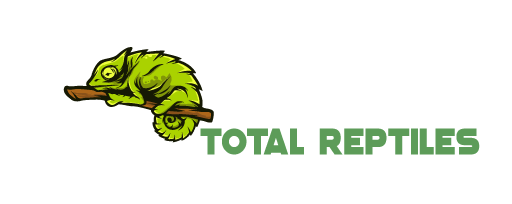Eating their shed skin in the wild helps bearded dragons hide from predators who might sniff out the discarded skin. It also allows them to recycle nutrients and calcium in the shed skin. Even domestic beardies maintain this instinctual habit.
Shedding skin – we humans do it all the time! Our beardie buddies also slough off their skin, but unlike us, bearded dragons eat their shed skin. Shedding helps bearded dragons grow, as their skin needs to be replaced when they outgrow it. But instead of leaving the shed skin behind, beardies often snack on it
So whether you’re grossed out or just plain curious about why your bearded dragon is eating his skin sweater, you’ll get the answers here!

Do Bearded Dragons Eat Their Shed Skin?
The short answer is yes, beardies do commonly eat their shed skin. This behavior is normal and rooted in their survival instincts.
Even though pet beardies don’t face the same challenges as wild ones, they retain this innate behavior passed down genetically over generations.
Eating the shed skin in the wild helped disguise their trail from predators and recycle nutrients when food was scarce. So don’t be alarmed if you see your beardie gobbling down their old skin – they are just following ancient instincts!
How Often Do Bearded Dragons Shed?
To understand the shedding and skin-eating process, it helps to know how often bearded dragons shed in the first place.
The shedding frequency depends on the dragon’s age:
- Baby beardies shed every 1-2 weeks since they rapidly grow. Their shedding takes around 3 days to complete.
- Juvenile beardies (6-18 months) shed every 6-8 weeks as their growth slows.
- Adult beardies shed much less frequently – just once or twice yearly. Their sheds take 2-3 weeks to finish.
So, younger dragons shed way more often than adults. But even adult beardies need to replace damaged or worn-out skin periodically.
Why Do Bearded Dragons Eat Their Sheds?
When a reptile sheds, its skin peels right off its body. So why would they turn around and eat it?

There are a few key reasons behind this behavior:
- Avoiding predators – Eating the shed skin destroys evidence of the dragon’s presence. In the wild, this keeps them safer from predators.
- Nutritional recycling – The skin contains proteins and nutrients like calcium, so eating it is an efficient way to reabsorb those resources.
- Instinct – Wild instincts drive beardies to eat their sheds, even when kept as pets. It’s an innate survival behavior.
So, in most cases, snacking on their old skin is normal for bearded dragons. No cause for alarm!
Is it Safe for Bearded Dragons to Eat Their Shed?
Yes, it’s generally safe as long as their enclosure is clean. A beardie’s skin is highly digestible, so eating their shed won’t harm them.
Their old skin can even provide nutritional value! Protein, vitamins, calcium, and phosphorus are in it.
There are some hazards.:
- Dirty enclosures – If the tank hasn’t been cleaned in a while, bacteria or parasites on the shed skin could make a beardie sick if ingested.
- Loose substrates – Sand or other loose substrates can stick to the shed skin and accidentally get swallowed. This can cause impaction.
So, as long as you stay on top of tank hygiene and use an appropriate substrate, letting your beardie eat its shed is A-OK!

How can you tell if your beardie is eating its shed?
Here are a few signs:
- You notice they’ve shed but can’t find the skin in the tank.
- Their appetite seems reduced right after a shed cycle.
- You see them nibbling on their skin!
Overall, don’t worry about your beardie eating their old skin – just be sure to remove any shed in a dirty enclosure to be safe.
Preventing Potential Issues
Beardies can safely eat shed skin, but owners can take precautions. Here are some tips.:
Provide proper nutrition. Make sure your beardie’s diet contains plenty of calcium and nutrients. Lack of calcium can cause them to eat more shed. Try adding more collard greens, mustard greens, and kale. You can also use calcium supplements if needed.
Use appropriate substrates. Sand, pelleted, or loose substrates can get accidentally ingested along with shed skin. This can cause impaction. Instead, use solid substrates like reptile carpeting or paper towels. Tile or slate works, too.
Keep the tank super clean. Debris and waste can contaminate the shed skin, making it unsafe to eat. Spot clean daily and fully disinfect the tank once a week.
Give baths/rubs. A warm bath can help loosen skin before shed time. Rub your beardie with a soft bristle toothbrush while bathing to remove any stuck shed.
Add moisture. Having proper humidity in the tank can aid the shedding process. You can add moist hides or mist the enclosure to reach the ideal 30-40% humidity during a shed.
Remove bad sheds. If the old skin doesn’t fully come off, take your beardie to the vet for help with removal. Retained shed can constrict blood flow or cause lost toes or tail tips.
Watch for changes. Keep an eye out for appetite changes, biting at skin, weakness, or signs of impaction if your dragon eats its shed frequently.
With the right husbandry tactics and awareness, letting your beardie snack on his old skin can be done safely. Just stay vigilant and intervene if issues come up!
FAQ
Do all bearded dragons eat their shed skin?
Nope, not every beardie will eat its shed. Some nibble away at it, while others leave it alone. Both behaviors are normal. Eating the shed is an instinctive behavior but not compulsory by any means.
What health issues can arise from poor shedding?
Retained shed around the eyes, toes, and tail tip can lead to irritation and even loss of digits or the tail. It can also cause decreased blood flow. Incomplete shedding is often a sign of dehydration or poor husbandry.
Can I help remove the stuck shed from my bearded dragon?
Avoid pulling shed skin off forcefully, as this can harm their scales. Try a warm bath and gentle rubbing with a wet cloth or toothbrush. The shed should come off easily when soaked.
Conclusion
we covered a lot of ground on why bearded dragons eat their shed skin! Eating their old skin is an instinctive, natural behavior for beardies. No cause for alarm! Ensure your tank is clean, and use a solid substrate to prevent risks. Support healthy shedding through proper humidity, baths, diet, and more. Monitor for any abnormal behaviors and consult your exotic vet if needed.
While snackin’ on the shed may seem weird, understanding the reasons behind it helps us appreciate the unique behaviors of these lovable lizards! Bearded dragons can safely enjoy their occasional skin snack with the proper setup and care.
So embrace your beardie’s quirks – shedding and eating included!

